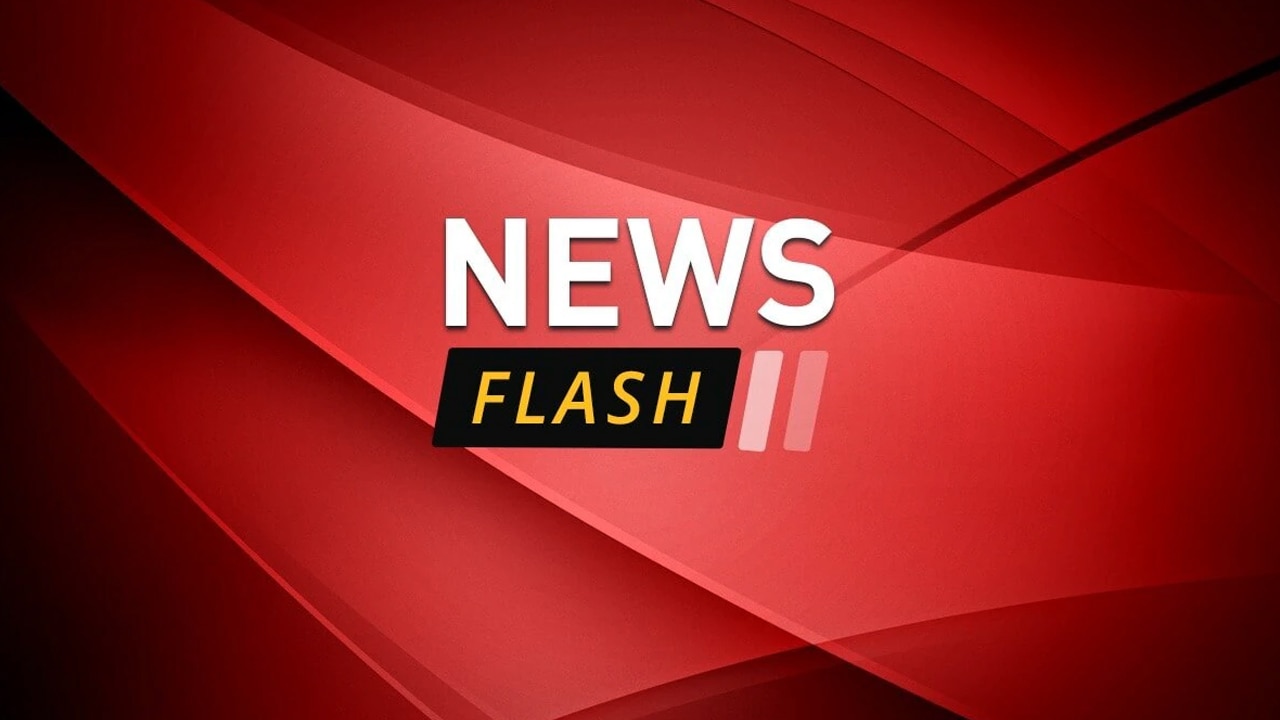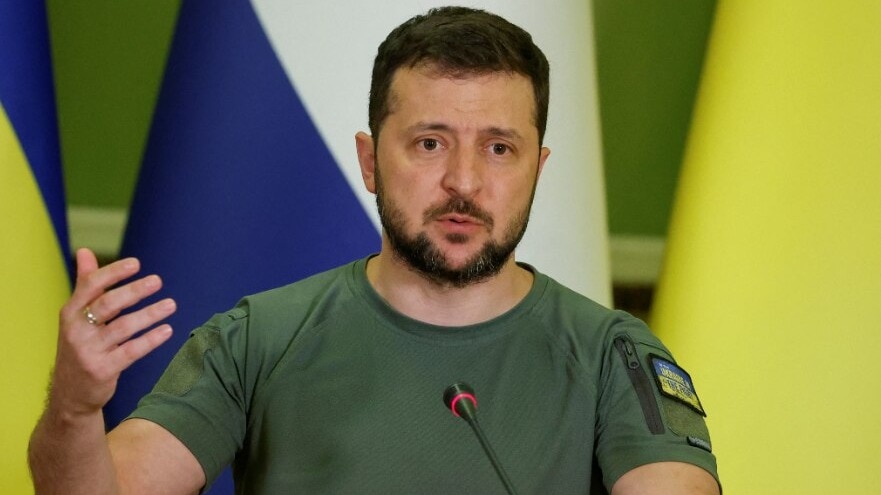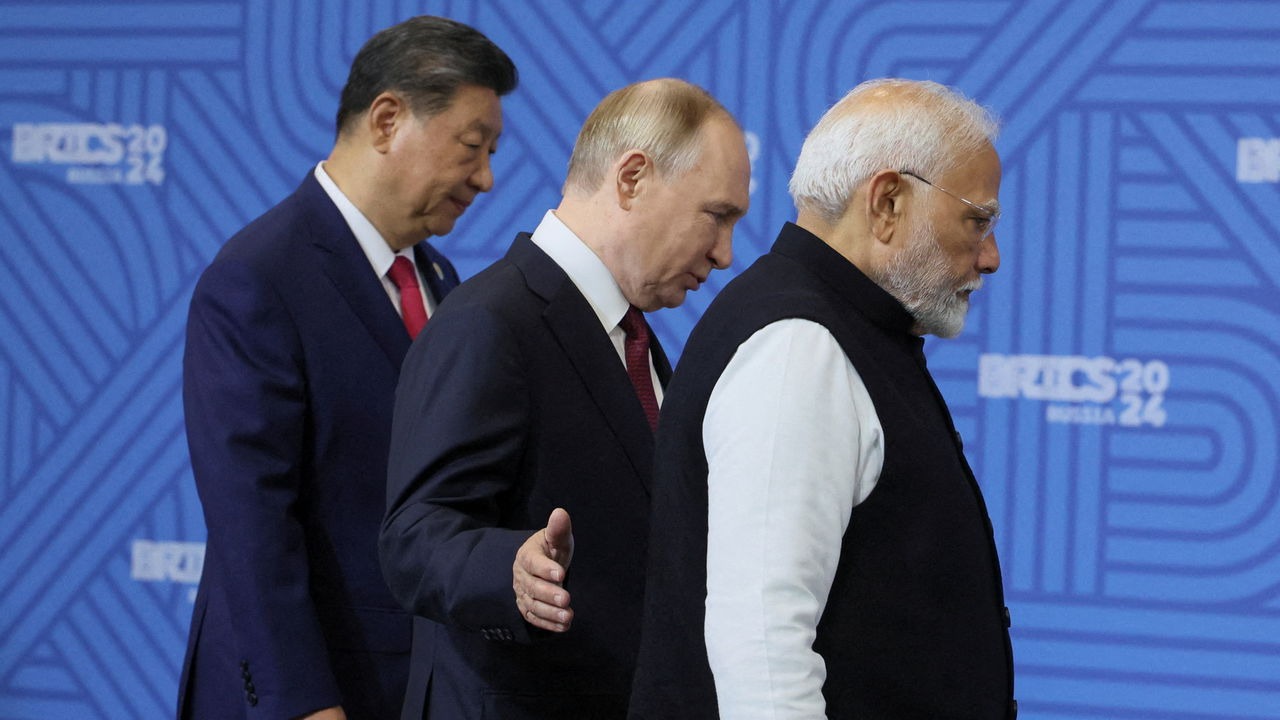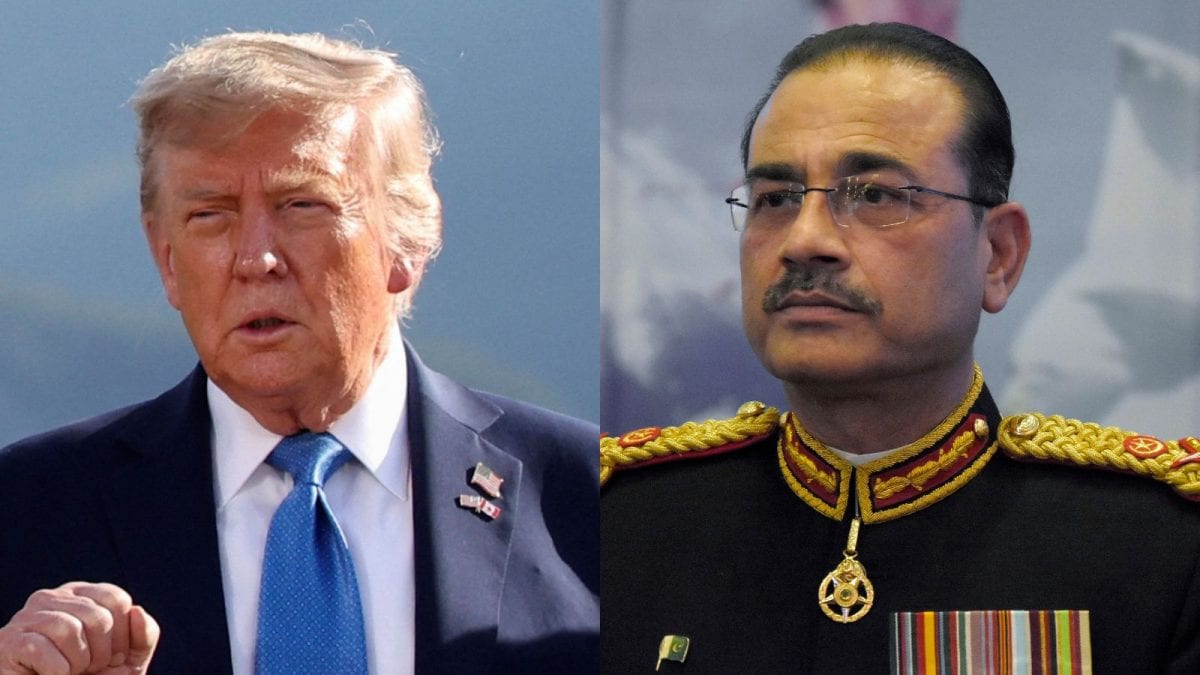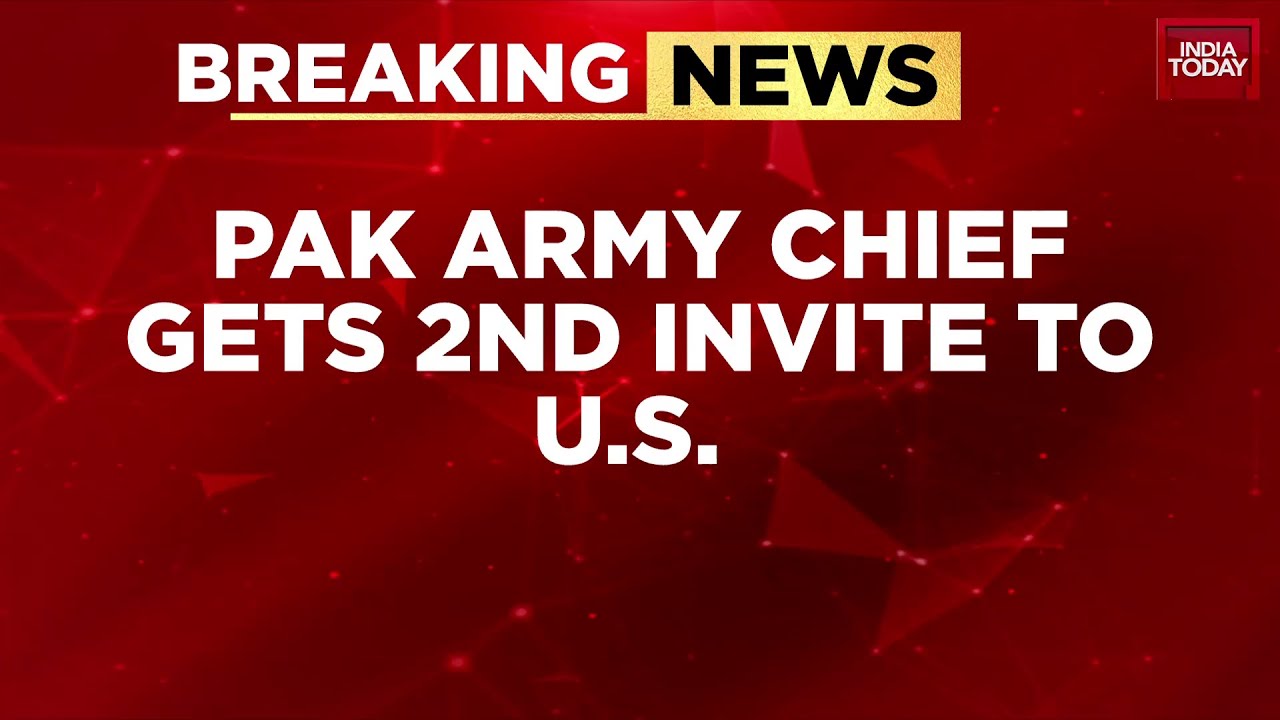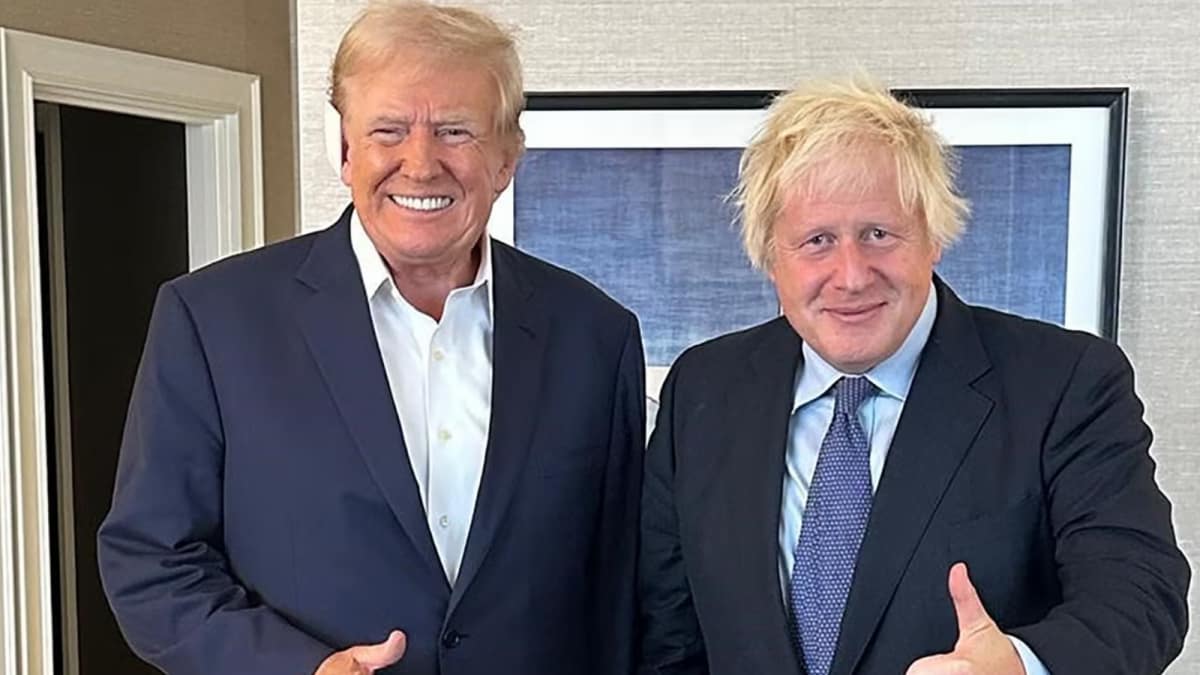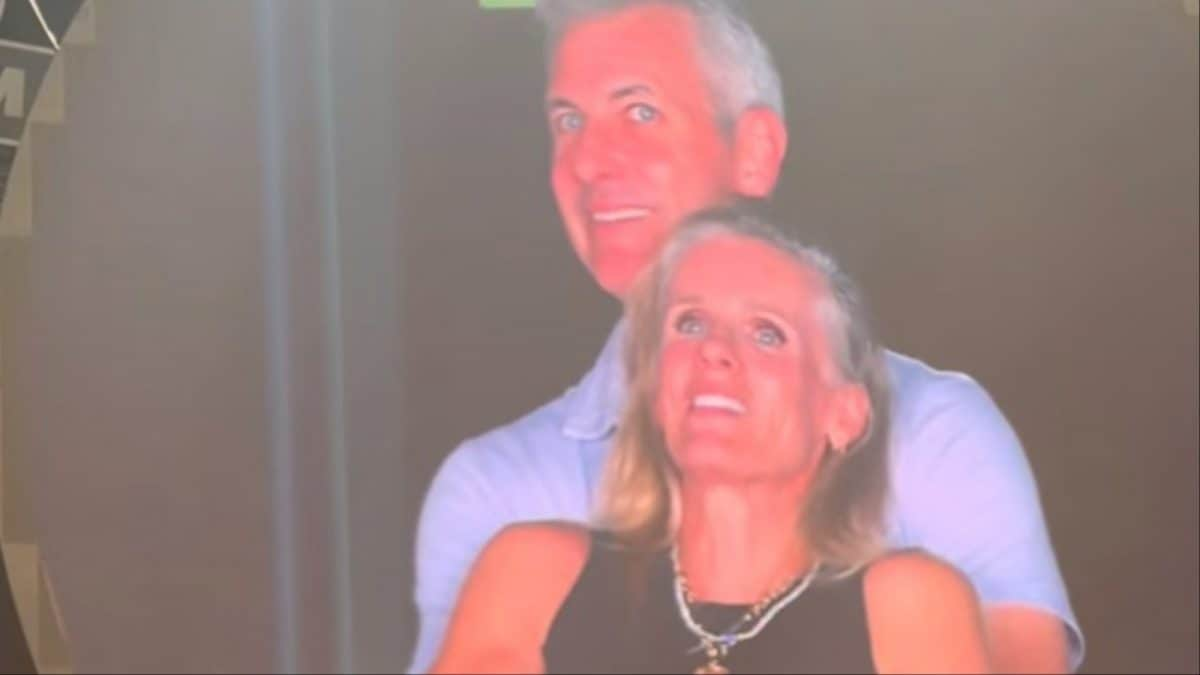Last Updated:August 06, 2025, 17:33 IST
Since 2022, the European Union has paid Russia 212 billion euros for fossil fuels, 66 billion more than India, despite war, sanctions, and all the moral grandstanding

Model of natural gas pipeline, EU and Russia flags (REUTERS/Illustration/File Photo)
When the European Union declared war on Russian energy after Vladimir Putin’s full-scale invasion of Ukraine, it did so with conviction, or so it seemed. In public, Brussels positioned itself as the global moral compass, championing sanctions, condemning the Kremlin, and promising to wean the continent off fossil fuels from Moscow. But more than two years later, the numbers reveal a different story: one where the EU continues to import Russian energy, in massive quantities, through technicalities, loopholes, and quietly maintained dependencies.
At the centre of this complex contradiction lies a reality many in Europe’s political leadership don’t publicly admit: despite pledges, declarations, and plans like RePowerEU — the EU’s flagship roadmap to end all Russian fossil fuel imports by 2027 — Russian energy is still flowing into the bloc, not only in trickles, but in volumes substantial enough to power Putin’s war machine.
Europe’s Energy Tab: €212 Billion And Counting
According to the Russia Fossil Tracker maintained by the Centre for Research on Energy and Clean Air (CREA), the EU has purchased over €212 billion worth of fossil fuels from Russia since the start of the invasion in February 2022. That includes crude oil, liquefied natural gas (LNG), pipeline gas, and coal. While the overall share has declined from pre-war levels, the EU remains Russia’s single largest fossil fuel customer, just edging out China.
This figure becomes even more striking when placed in context. The EU’s payments for gas alone since the war began total roughly $105.6 billion, which amounts to 75 per cent of Russia’s 2024 military budget. In effect, while Europe imposes sanctions in theory, its energy transactions in practice continue to fund the very war effort it seeks to weaken.
LNG: The Sanction-Free Stream No One Wants To Talk About
Perhaps the most blatant gap in the EU’s sanctions regime is LNG. While Russian seaborne crude oil and refined petroleum products were banned in December 2022, LNG remains entirely exempt. This exemption was largely intended to safeguard energy security for member states that lacked reliable pipeline alternatives, but it left a gaping loophole that Moscow continues to exploit.
In the third year of the war, the EU paid $8.5 billion for Russian LNG, with volumes increasing by 9 per cent year-on-year. In fact, 52 per cent of all Russian LNG exports currently head to Europe, making the bloc the single biggest customer by far.
The distribution of these imports tells an even more nuanced story. In the first half of 2025, France increased its Russian LNG intake by 46 per cent, reaching 7.7 billion cubic metres. The Netherlands saw an even steeper surge, 81 per cent, bringing total imports to 1.7 bcm. Belgium and Spain, while showing declines from previous highs, still imported 5.1 and 5.7 bcm, respectively. These four countries together accounted for 87 per cent of all Russian LNG arrivals into the EU. Much of this LNG is then re-gasified and sent through cross-border interconnectors, meaning the original importer is often not the final consumer, a convenient arrangement that diffuses responsibility and obscures the true scale of dependency.
In the public narrative, LNG is often excluded from discussions around energy dependence. But in hard terms, it is the last remaining tap, and it’s still wide open.
Pipeline Gas Via TurkStream
The picture is similar when it comes to pipeline gas, albeit with more nuance and historical baggage. Before the Ukraine war, Russia supplied pipeline gas to Europe via multiple routes, through Belarus, Ukraine, and the Baltic Sea’s Nord Stream pipelines. However, by 2025, all but one of these have either been decommissioned or disrupted.
After Ukraine chose not to renew its five-year gas transit agreement with Moscow, which expired in January 2025, and following the sabotage of Nord Stream 1 and 2 in late 2022, the TurkStream undersea pipeline became the only remaining direct conduit for Russian pipeline gas into the EU. Running from Russia to Turkey and then into southeastern Europe, TurkStream has now become the sole operational artery in what was once a vast gas network.
And it’s far from idle. In July 2025, Russian gas flows via TurkStream surged to 51.5 million cubic metres per day, up from 37.6 mcm/day in June, a 37 per cent monthly jump according to Reuters data. Compared to July 2024, volumes were up by 4.7 per cent, indicating not a one-off spike but a trend of sustained revival. Over the first six months of 2025 alone, 9.93 billion cubic metres of Russian gas flowed through this pipeline, slightly more than during the same period last year.
What’s crucial to note is that none of this violates EU law. There are no formal sanctions on Russian pipeline gas. The sharp decline in pipeline flows since 2022 was not due to EU policy decisions, but rather physical and political disruptions. The infrastructure for imports remains legally available, and TurkStream now quietly fills the gap, with minimal political scrutiny.
G7 Tankers Are Still Shipping Russian Oil
Another uncomfortable truth lies offshore. While the G7 has championed the oil price cap as a sanctions success story, its own fleet of tankers is helping move Russian crude and refined products across the globe.
In June 2025, over 56 per cent of Russia’s seaborne oil exports were carried by tankers owned or insured in G7 countries. Just six months earlier, that figure stood at 36 per cent. For oil products — diesel, gasoline, and more — the share was even higher: 80 per cent of seaborne product exports were handled by G7+ vessels, according to CREA’s June report.
In contrast, the share of “shadow fleet" tankers — older, often uninsured ships sailing under flags of convenience — declined. This suggests that as sanctions enforcement became riskier, Western actors quietly re-entered the trade, this time under the umbrella of price cap compliance. The price cap mechanism, introduced by the G7, allows maritime transport of Russian oil only if it is sold below $60 per barrel. But enforcement is often weak, and opaque documentation makes it easy for shipments to pass with little scrutiny.
Technically, much of this oil is sold below the sanctioned threshold. But practically, it means the same actors calling for tougher sanctions are simultaneously enabling Russian exports, with legal cover.
Fertilisers: A Strategic Exception That Keeps Flowing
While fossil fuels dominate headlines, the story of fertilisers is just as revealing. Russia continues to be the EU’s largest supplier of fertilisers, even in 2025. And that’s because fertilisers are not sanctioned, a conscious exemption made to protect European agricultural stability and food security. For example, nitrogen-based fertilisers derived from natural gas are critical for European crop yields, particularly in grain-producing nations such as France and Germany.
According to Eurostat, Russia’s share of EU fertiliser imports dipped only slightly, from 28 per cent in Q1 2021 to 26 per cent in Q1 2025. Despite the war, despite the sanctions, and despite other alternatives, Europe has continued to depend on Russian supply to feed its soil.
This trade not only boosts Russian export earnings but also highlights how the EU’s “strategic dependencies" have been carved out of the sanctions regime, quietly, deliberately, and without much public debate.
Long-Term Contracts, No Legal Exit
A major barrier to breaking this dependence lies not just in political will, but in contractual reality. Many EU companies hold long-term LNG purchase agreements with Russian entities, some stretching up to 2040. As CREA’s April 2025 analysis points out, these contracts are nearly impossible to break without invoking force majeure, and force majeure clauses require a legally binding ban, not just a political preference.
That’s the core problem with the EU’s vaunted RePowerEU plan, which aims to end all Russian fossil fuel imports by 2027. While ambitious on paper, it is not legally binding. This means companies have no grounds to exit their contracts without facing lawsuits or penalties. Until Brussels formalises that plan into law, Russian gas and LNG will continue flowing under the protection of binding commercial obligations.
India, Trump, And The West’s Convenient Blind Spot
The contradictions in Europe’s energy posture have become even more visible in light of recent US commentary. On Monday, US President Donald Trump accused India of “profiteering" from Russian oil and threatened additional tariffs on Indian exports to the US. He alleged that New Delhi was fuelling the Kremlin’s war economy while turning a blind eye to Ukraine.
But the numbers, again, tell a different story.
Since the invasion, India’s total fossil fuel imports from Russia have stood at €146 billion, far below the EU’s €212 billion. Moreover, India’s purchases are conducted transparently, within the bounds of international law, and do not involve Western-owned tankers or indirect re-exports.
The criticism appears rooted less in substance and more in optics, as India’s rising geopolitical clout and independent energy policy have unsettled traditional Western power centres.
Unlike the EU, India has no legacy contracts, no hidden transshipment corridors, and no subsidy-driven LNG pipeline tying it to Moscow. The criticism, therefore, seems not only misplaced but also hypocritical, especially when it comes from actors complicit in Russia’s sustained energy revenues.
The Sanctions That Weren’t
The EU’s energy relationship with Russia is not just a matter of incomplete decoupling; it’s a reflection of strategic ambiguity, where public morality and private necessity move in opposite directions. While Brussels proclaims solidarity with Ukraine, it has continued, through loopholes, exemptions, and logistical partnerships, to funnel billions into Russia’s energy sector.
This quiet complicity does more than sustain the Kremlin’s budget. It undermines the very credibility of Western sanctions, casting doubt on whether the objective is deterrence, or simply optics.
Unless the EU moves from declarative policy to enforceable bans and aligns its commercial reality with its political rhetoric, the message will remain mixed.

Siddhant Mishra is a Senior Special Correspondent at CNN-News18, covering foreign affairs and international relations. With over 12 years of experience in journalism, he has also reported extensively on crime, ...Read More
Siddhant Mishra is a Senior Special Correspondent at CNN-News18, covering foreign affairs and international relations. With over 12 years of experience in journalism, he has also reported extensively on crime, ...
Read More
August 06, 2025, 17:33 IST
News explainers Preaching Russia Sanctions, Paying Putin: Inside The EU’s Energy Trade Hypocrisy
Disclaimer: Comments reflect users’ views, not News18’s. Please keep discussions respectful and constructive. Abusive, defamatory, or illegal comments will be removed. News18 may disable any comment at its discretion. By posting, you agree to our Terms of Use and Privacy Policy.
Read More

 7 hours ago
7 hours ago


